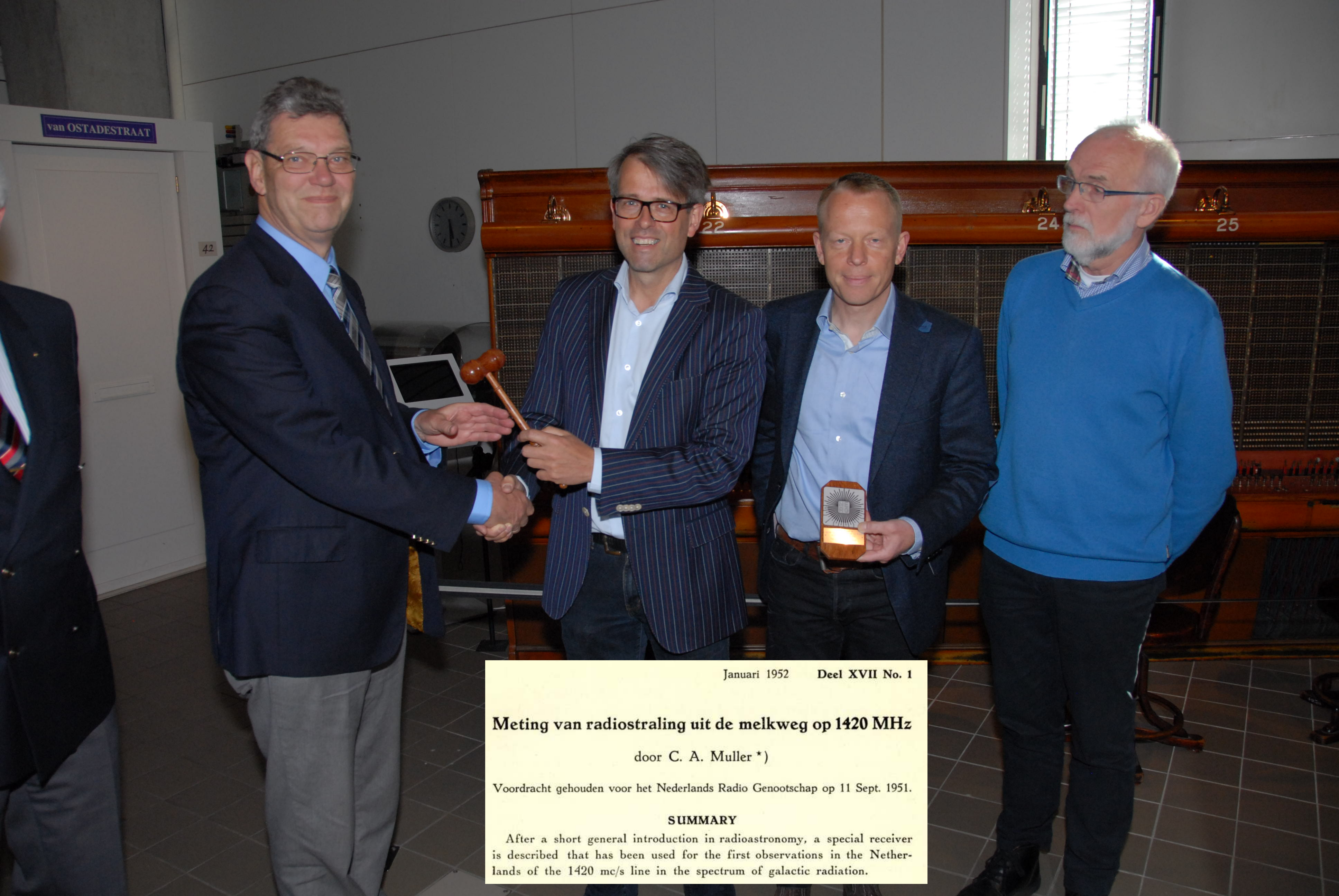 © ASTRON
© ASTRON
The Dutch Electronics and Radio Society was established as the Dutch Radio Society (Nederlandsch Radio Genootschap, NRG) at May 29th 1920. The goal of the organization was the advancement of scientific research in the, at that time new, field of radio communication. Among the first members were three Nobel prize laureates: Lorentz, Van der Waals and Zeeman. Radio communication at that time was an important topic in the Netherlands, to become independent of foreign telegraph cables to communicate with their colonies, especially the Dutch East Indies.
In 1922 the NRG was one of the initiators of the establishment of the URSI as the international radio science organization. The N(E)RG hosted the Dutch URSI committee until the Royal Dutch Academy of Arts and Sciences took over that role in 2005.
After World War II the field of radio broadened to what we nowadays call electronics. For that reason the society changed its name to Dutch Radio and Electronics Society in 1963. Radio astronomy as new application of radio science also got the attention of the NRG. The detection of the neutral hydrogen line by Muller in 1951 was published in the journal of the NRG in 1952 (see the insert). In later issues of the journal of the N(E)RG other developments at ASTRON were published, including for the JCMT, the WSRT and LOFAR(*).
All the issues of the journal of the N(E)RG (Tijdschrift van het N(E)RG) are available online now via https://www.kivi.nl/afdelingen/telecommunicatie/nerg/archief-nerg-tijdschriften-nederlands-electronica-en-radiogenootschap
On the picture above Bart Smolders(*), chairman of the NERG, hands over the gavel to Willem van der Kamp, chairman of the telecommunication branch of the Royal Netherlands Society of Engineers.
(*) Editor's note: A future AJDI will be devoted to the various ASTRON employees who have been awarded prestigious prizes by the NERG. Also Prof Smolders, the present (and last) chairman of the NERG, is an esteemed ex-colleague.
 © R.H. van den Brink
© R.H. van den Brink © ASTRON
© ASTRON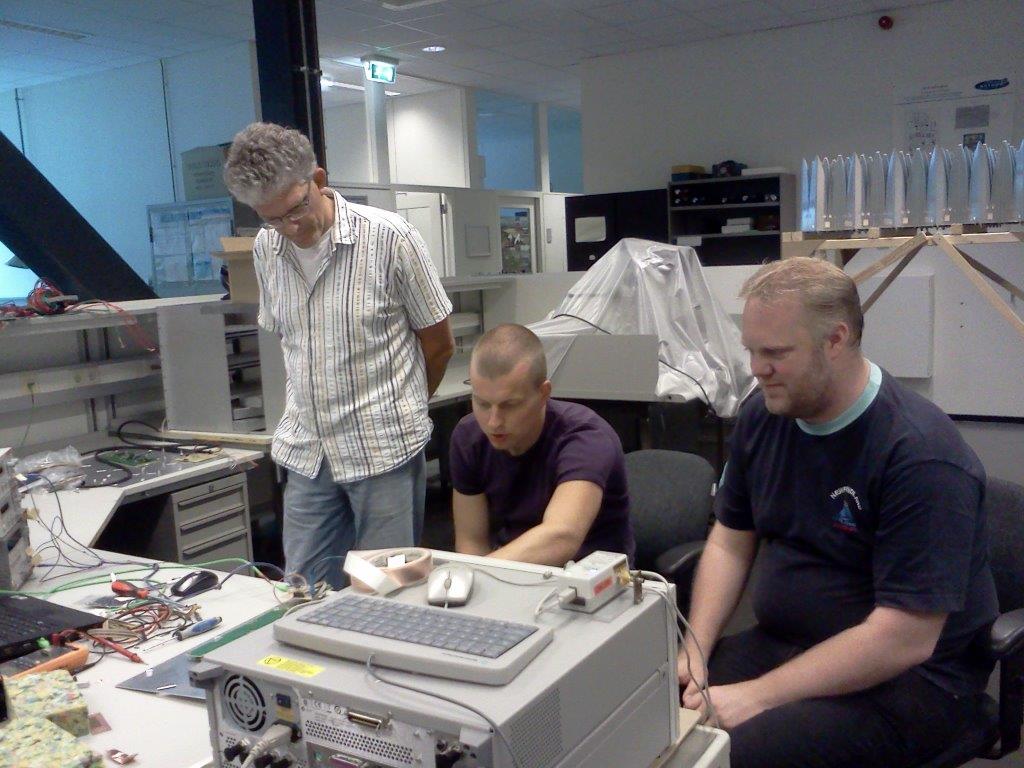 © ASTRON
© ASTRON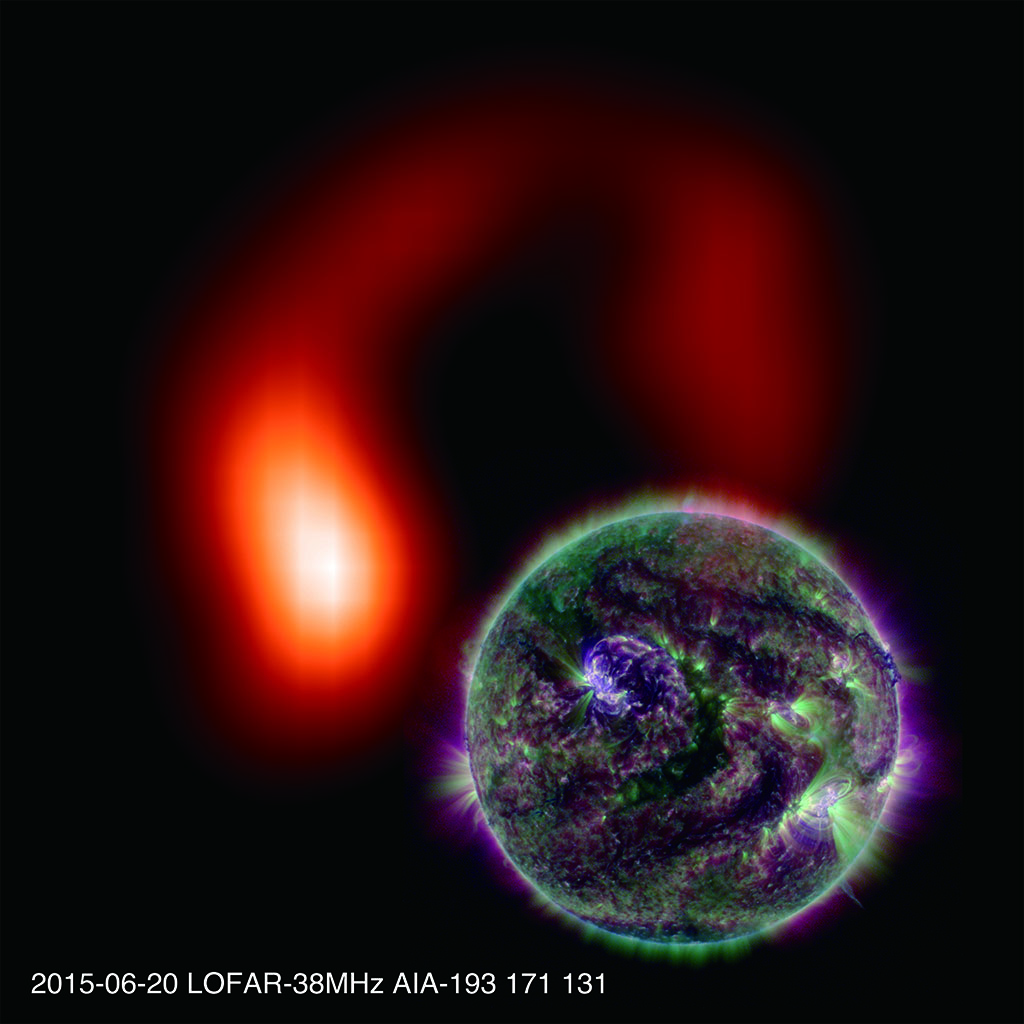 © NASA/SDO, LOFAR, Sijie Yu, Eduard Kontar
© NASA/SDO, LOFAR, Sijie Yu, Eduard Kontar © ASTRON
© ASTRON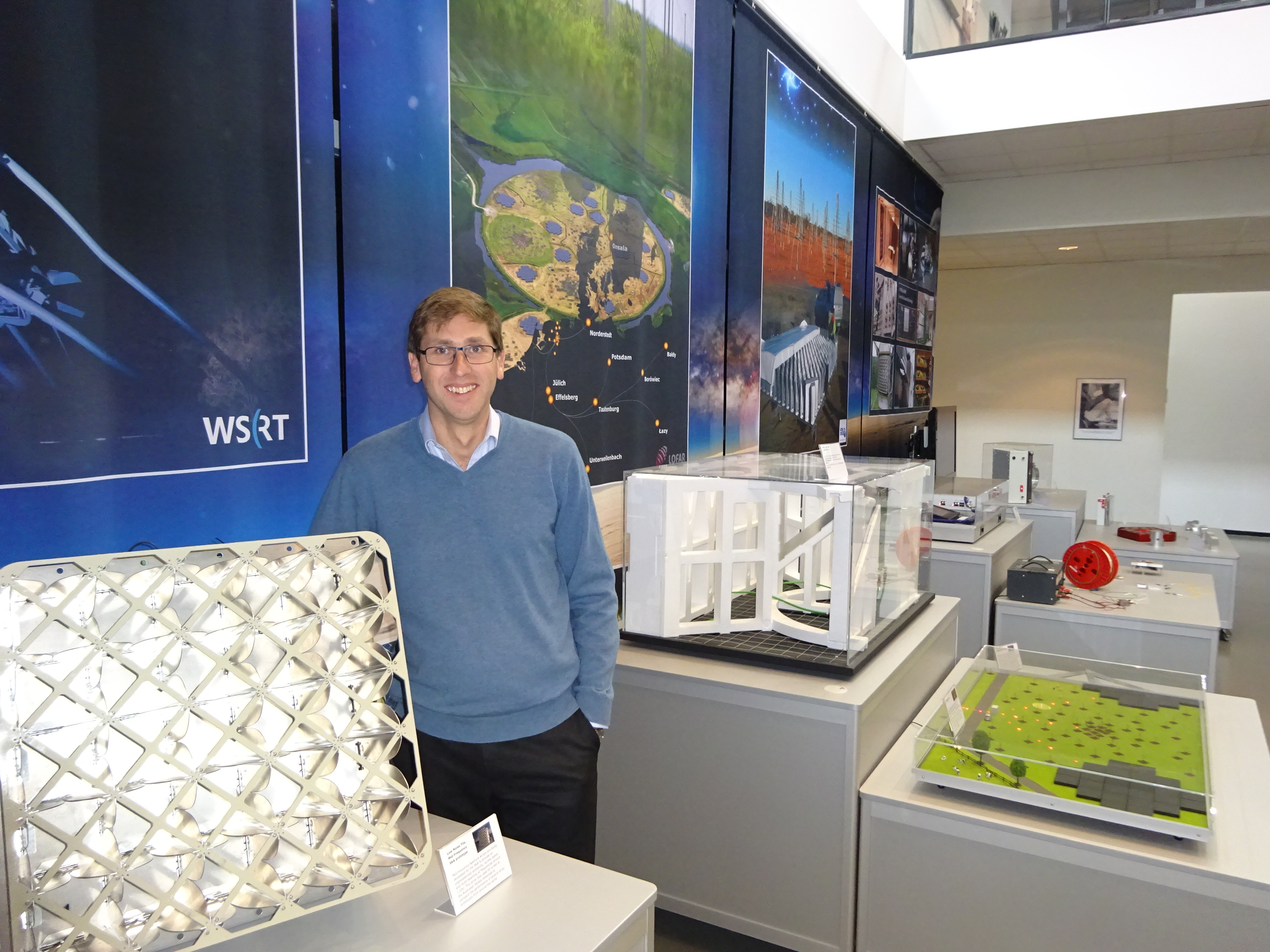 © Madroon Community Consultants (MCC)
© Madroon Community Consultants (MCC) © ICRAR/Curtin
© ICRAR/Curtin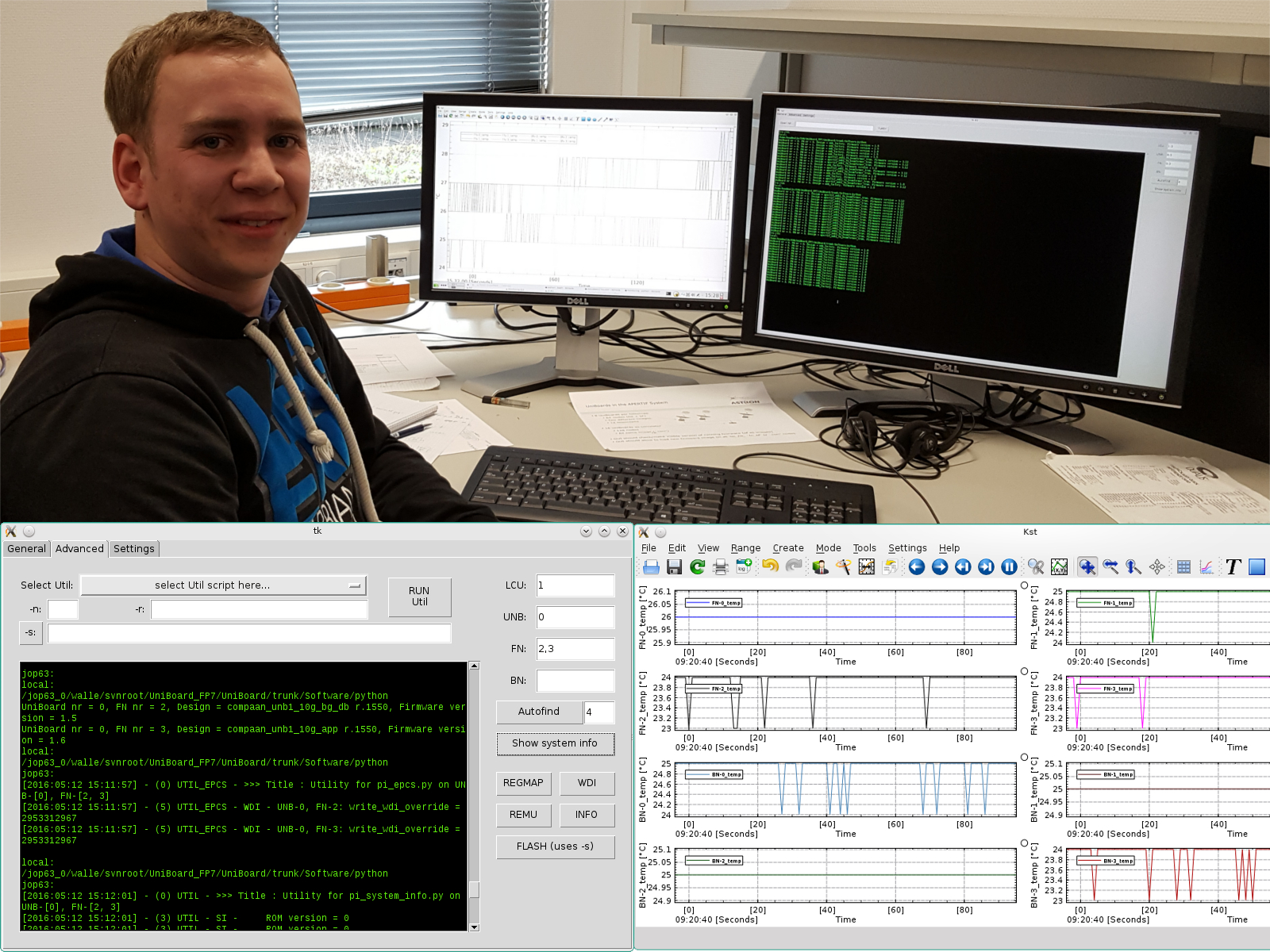 © DESP
© DESP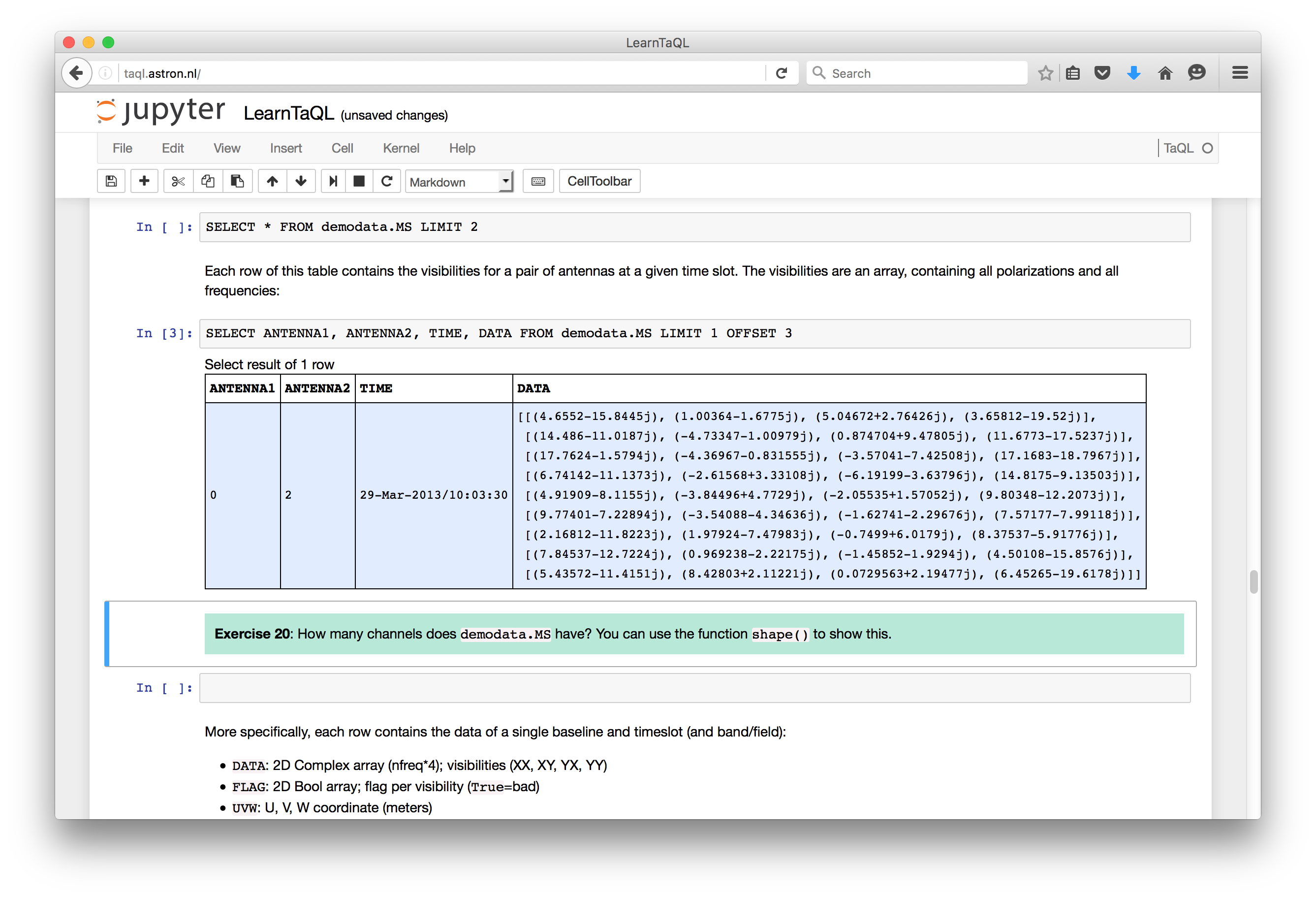 © TJD
© TJD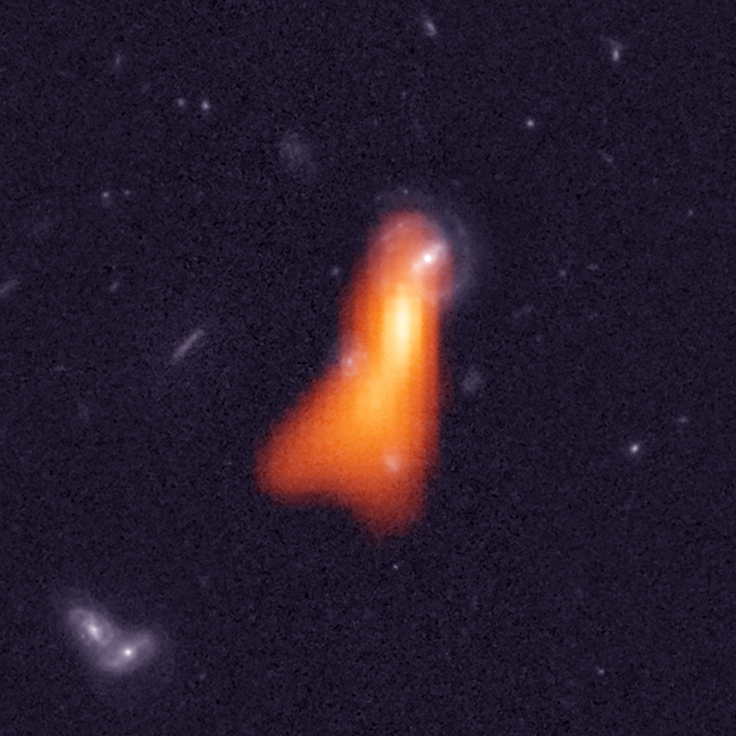 © NRAO/ICRAR
© NRAO/ICRAR © Jochen Heidt
© Jochen Heidt © ASTRON
© ASTRON © Robert van der Horn
© Robert van der Horn © Madroon Community Consultants (MCC)
© Madroon Community Consultants (MCC) © Manolis Papastergis (Kapteyn)
© Manolis Papastergis (Kapteyn) © Alec Hirschauer (Indiana University)
© Alec Hirschauer (Indiana University) © Credit: B. Saxton (NRAO/AUI/NSF)/G. Tremblay et al./NASA/ESA Hubble/ALMA (ESO/NAOJ/NRA)
© Credit: B. Saxton (NRAO/AUI/NSF)/G. Tremblay et al./NASA/ESA Hubble/ALMA (ESO/NAOJ/NRA)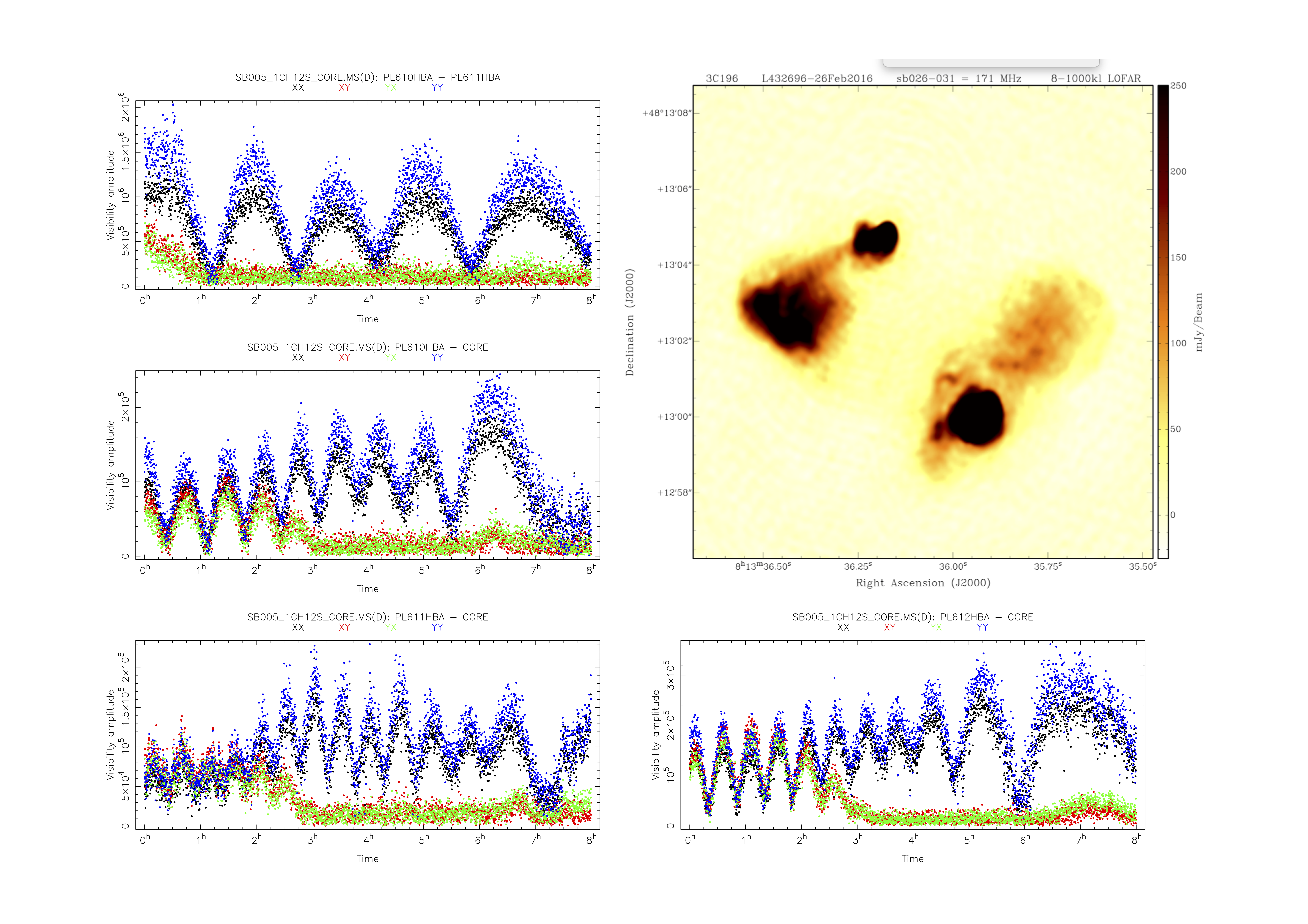 © Ger de Bruyn
© Ger de Bruyn © Maaijke Mevius, Emanuela Orru, Richard Fallows
© Maaijke Mevius, Emanuela Orru, Richard Fallows







